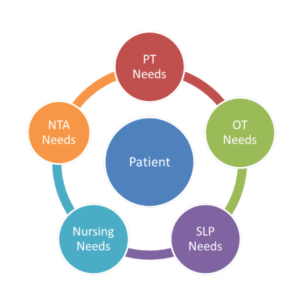Bundling without bungling
In 2012, the Centers for Medicare & Medicaid Services (CMS) awarded hundreds of Bundled Payment for Care Initiatives (BPCI) pilots across four different bundling models. Models #2 and #3 focused on post-acute care.
"Bundling has been around since before the ACA. It's considered the #1 model to bend the cost curve," explained Jade Gong, MBA, RN, senior vice president, Health Dimensions Group, in an educational session at the 2013 LeadingAge conference in Dallas. "With lower payments, providers must accept more risk to survive."
CMS allowed up to 48 different episode bundles during the pilots, and allowed pilot networks to choose their own bundle time frames. Although most pilots chose 30-day episodes of care, longer stay lengths are also important, warned Brian Fuller, MSA, senior consultant, Health Dimensions Group."Choose your comfort level, but keep an eye on the 60-, 90- and 120-day episodes, because eventually you're going to get pushed toward the chronic care and longer-term model," he said.
The key steps to creating a bundle:
- Define the population to be bundled
- Define how long a bundle will last (30, 60, 90 days, etc)
- Analyze the quality of care delivered by partners
- Define who will be a risk-bearing entity and what parameters will be used for care pathways
- Focus on cost targets that will result in a discount of at least 3 percent cost reduction for CMS. "For better or worse, we've settled on the arbitrary 3 percent," Fuller said. "But to be honest, the opportunity is much much greater."
As acute care continues to streamline care processes into narrower networks of referral partners, the focus is already widening from transitions of care and readmissions to greater overall cost savings in post-acute care, which currently accounts for almost one-third of the total costs for several key episodes, including major joint replacements and heart failure. Increasingly, post-acute care's job also will be about optimizing chronic care costs for increasingly frail people and those nearing the end of life.
"The greatest risk of all is the risk of the status quo," Fuller said. "If you're doing what you've always done, that's more risk than any bundled payment model."

Pamela Tabar was editor-in-chief of I Advance Senior Care from 2013-2018. She has worked as a writer and editor for healthcare business media since 1998, including as News Editor of Healthcare Informatics. She has a master’s degree in journalism from Kent State University and a master’s degree in English from the University of York, England.
Related Articles
Topics: Accountable Care Organizations (ACOs) , Articles , Executive Leadership , Medicare/Medicaid , Regulatory Compliance










